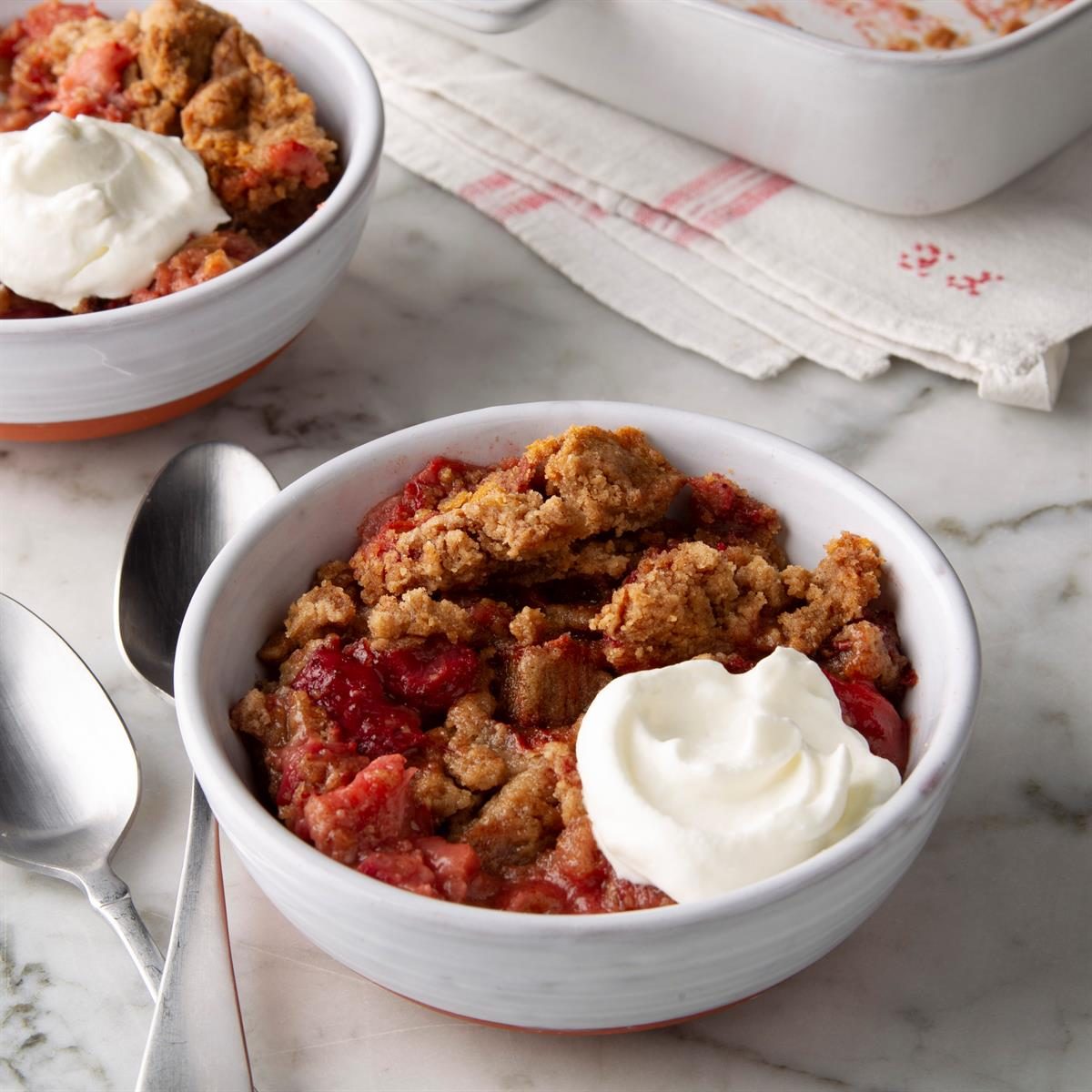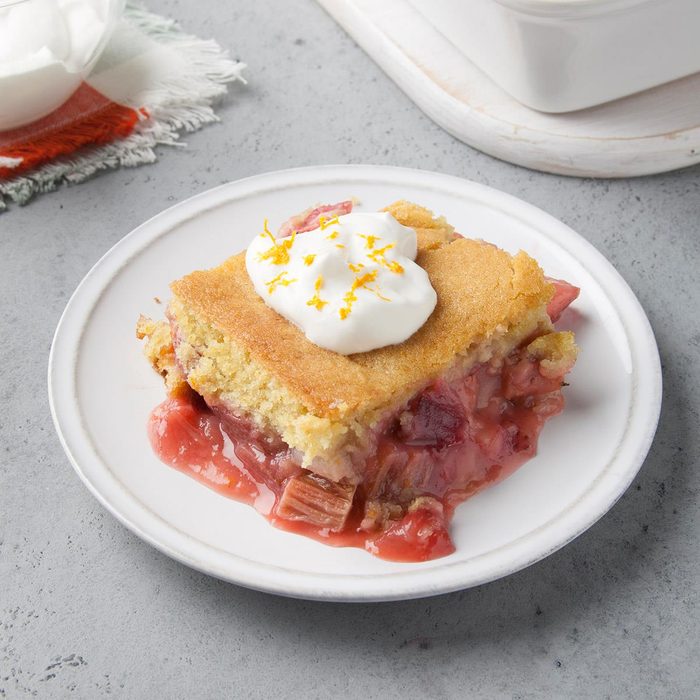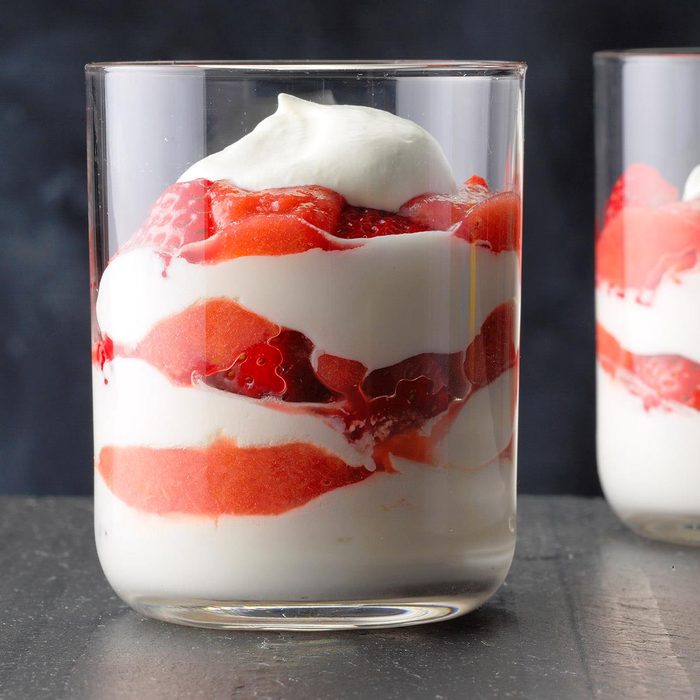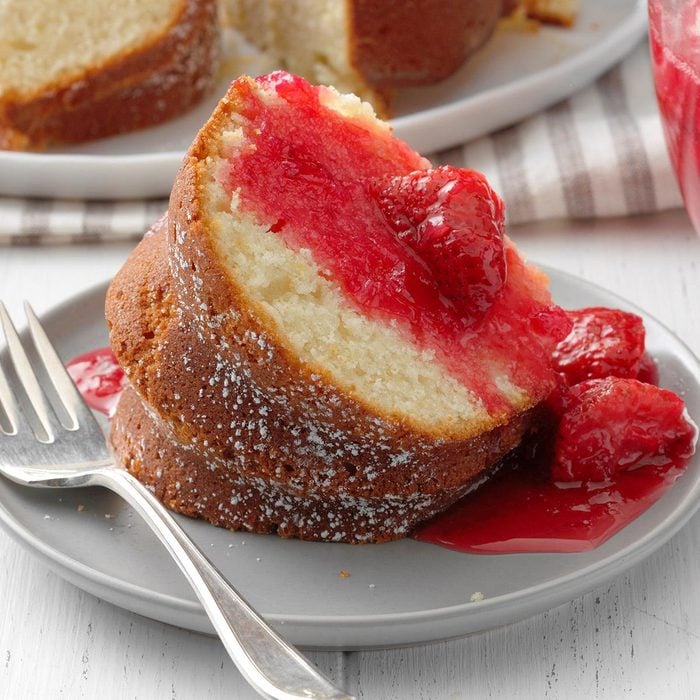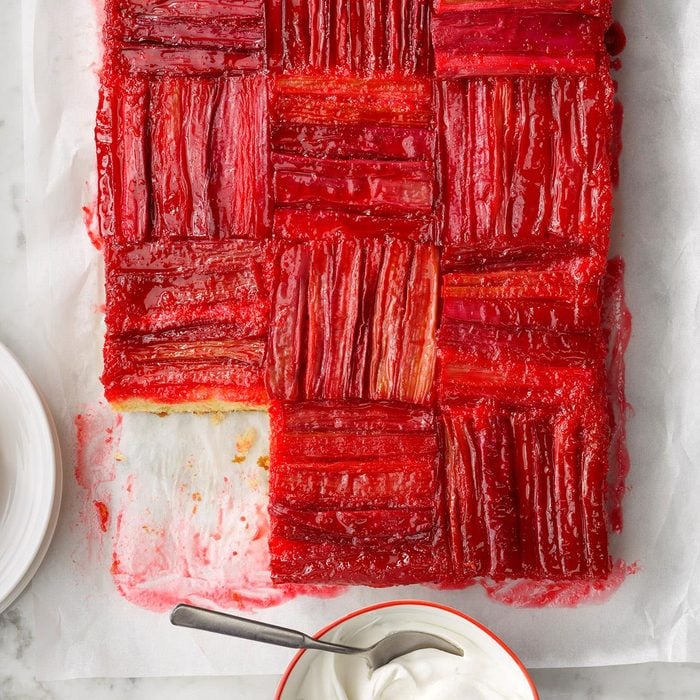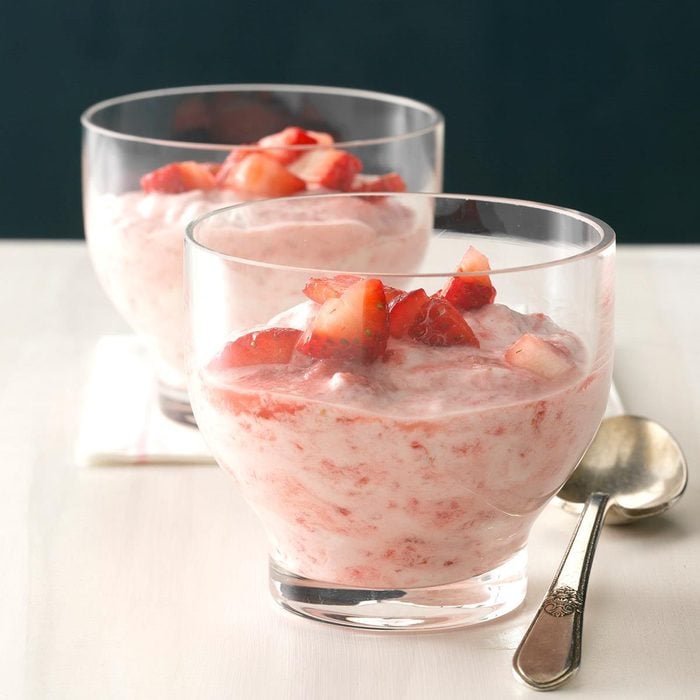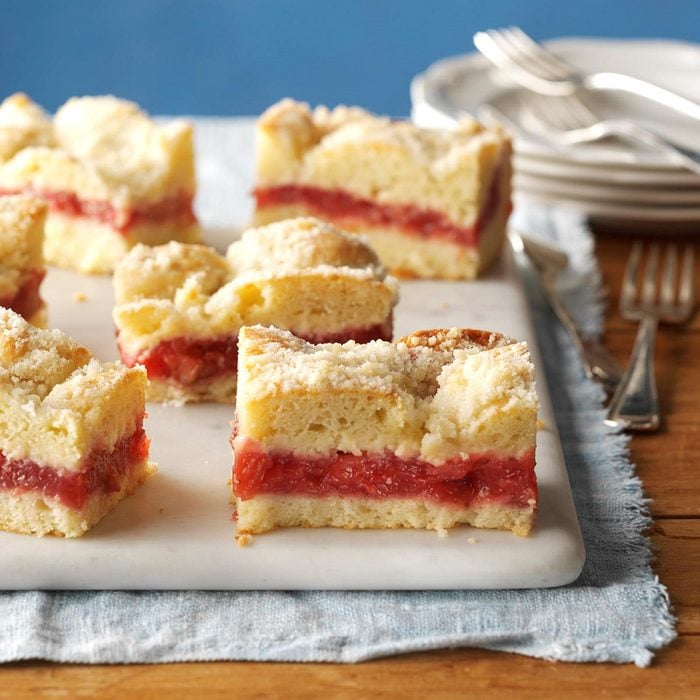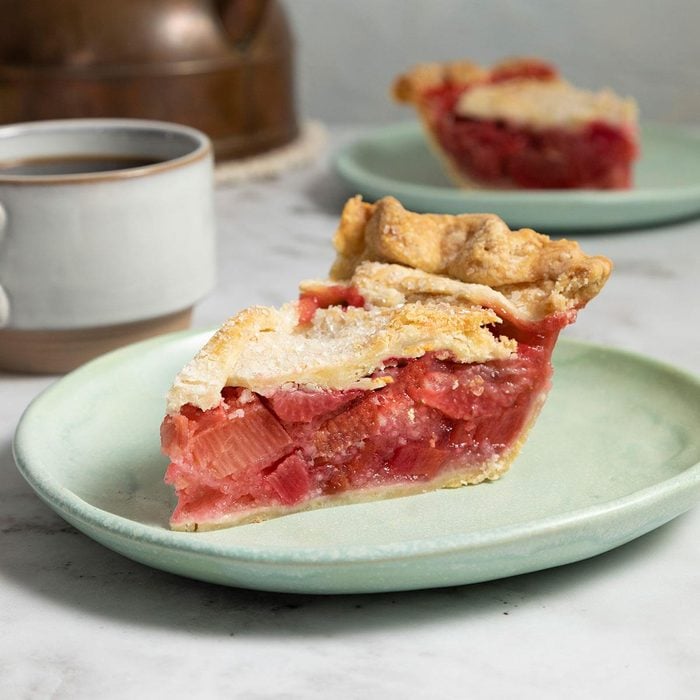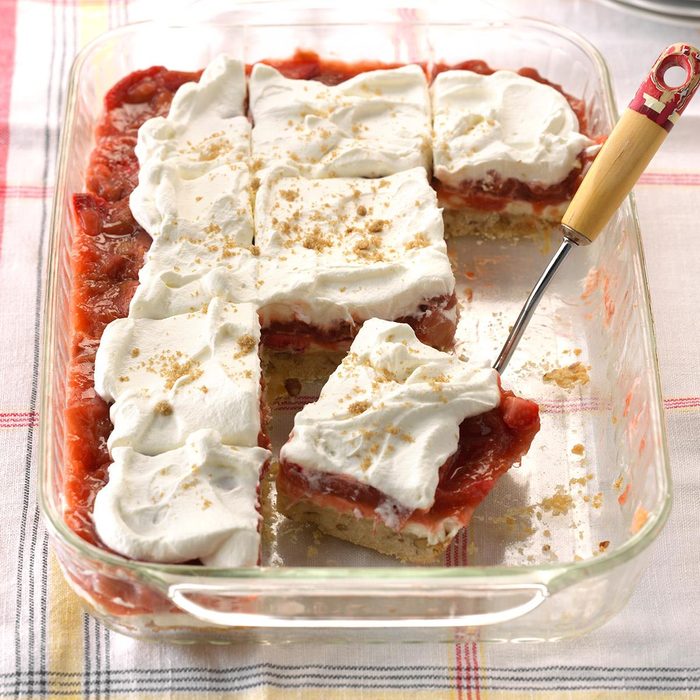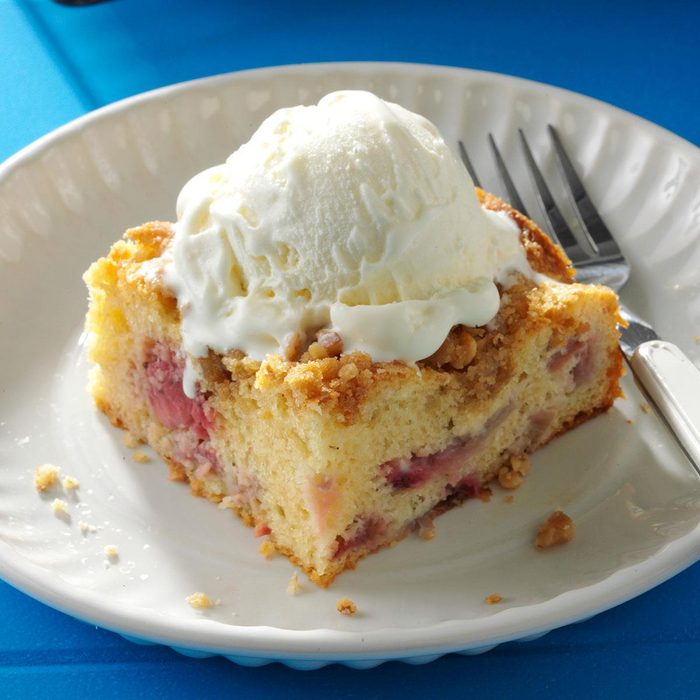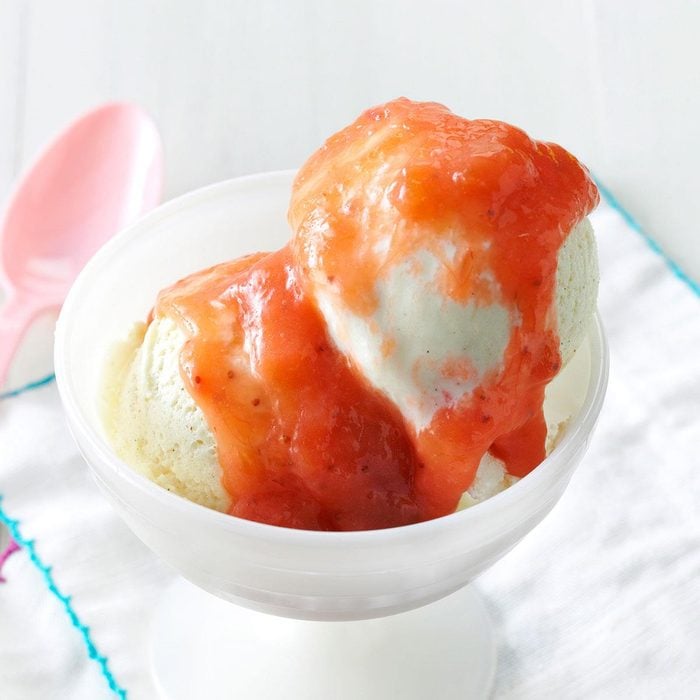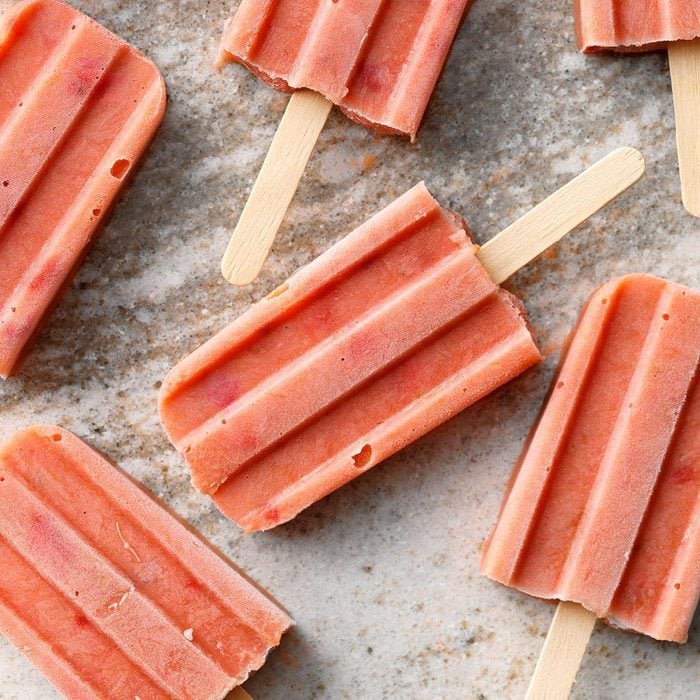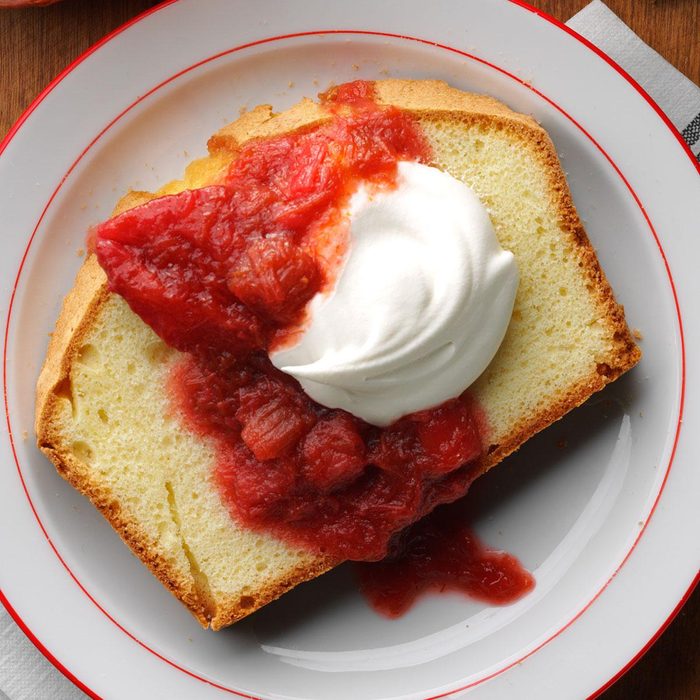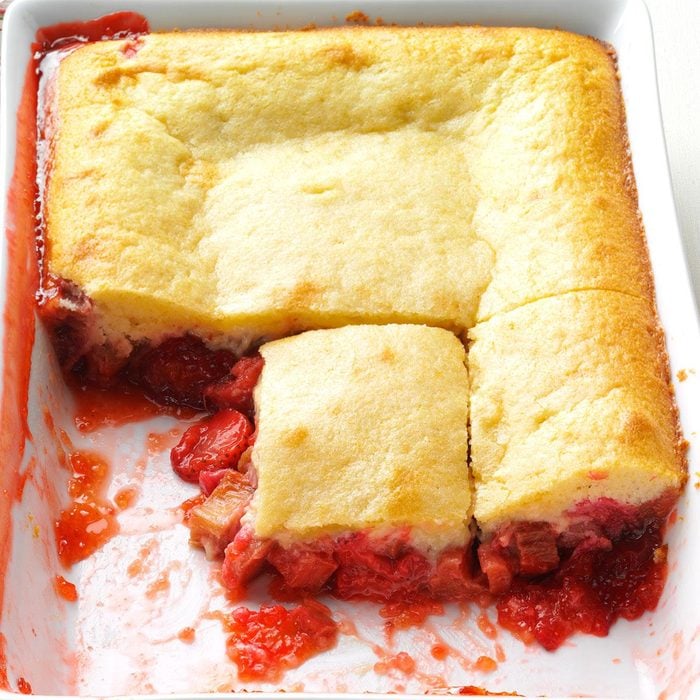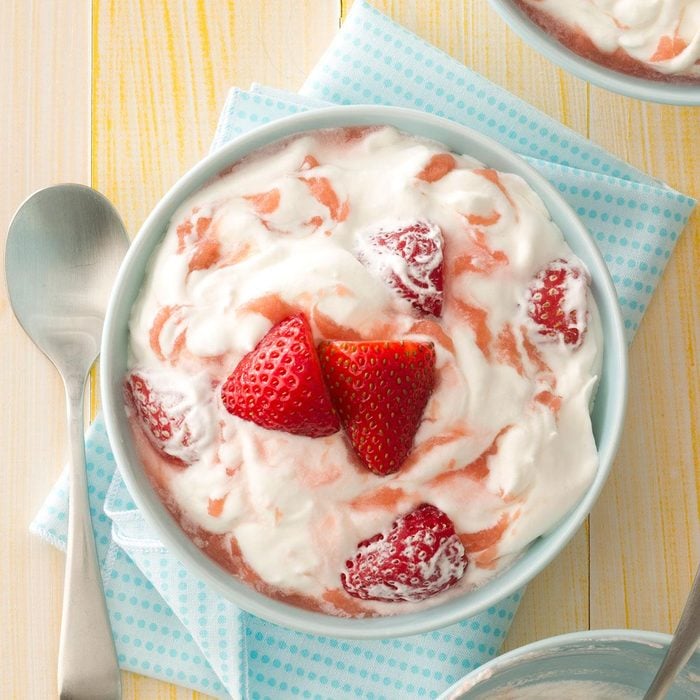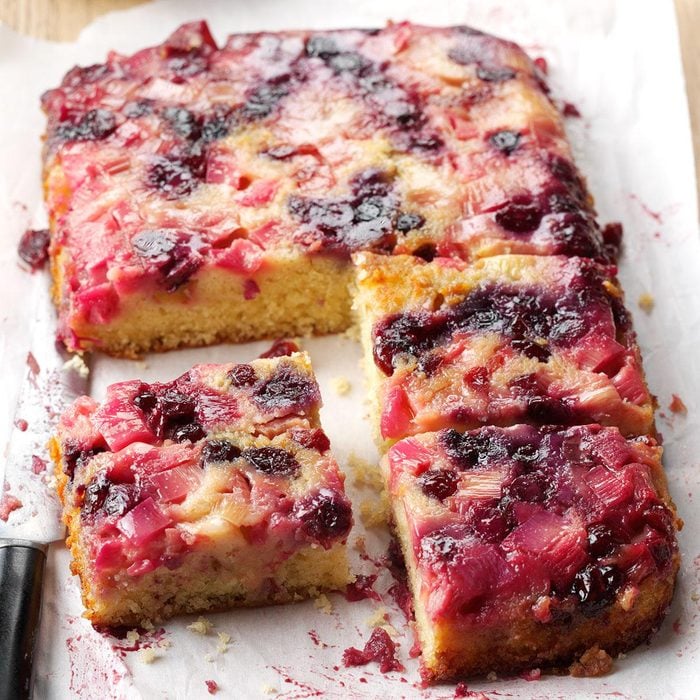Strawberry Rhubarb Dump Cake
It always seems like my rhubarb goes bad in a hurry, so I was looking for a simple way to combine two of my favorite flavors in an incredibly easy dessert. I added extra spices to enhance the flavor of this strawberry-rhubarb
dump cake for a sweet treat my whole family loved! —Jessica Bridge, Grand Junction, Colorado
Go to Recipe
Strawberry Rhubarb Cheesecake BarsThese cheesecake bars layer a buttery pecan shortbread crust with a rich and creamy filling and sweet-tart strawberry rhubarb jam. For larger squares, cut into nine bars instead of 16. —Amanda Scarlati, Sandy, Utah
Rhubarb Strawberry CobblerMom's yummy cobbler is a truly wonderful finale to any meal. This family favorite is sweet and tart, chock-full of berries and rhubarb, and the thick crust is so easy to make. —Susan Emery, Everett, Washington
Rhubarb CrumbleOur rhubarb crumble is filled with a unique combination of bright pink rhubarb stalks, fresh strawberries and apples.
Strawberry-Rhubarb MuffinsStrawberry-rhubarb muffins might just be our favorite baked treat to celebrate the sweet-tart flavors of the late spring and summer harvest.
Strawberry Rhubarb Cake with OrangeI came up with this strawberry rhubarb cake when I wanted to make something with rhubarb and strawberries that wasn't a pie. If you know someone who hasn't tried rhubarb before, this is a great way to introduce them to it. —Theresa Kreyche, Tustin, California
Berry Rhubarb FoolA "fool" is a British dessert that's usually made with custard. This is a modified, quicker version I created. My kids love it because it
doesn't taste like rhubarb—so I guess it's well named! —Cheryl Miller, Fort Collins, Colorado
Lemon Rhubarb Tube CakeFor a taste of summer, try this dessert. The cake's fresh lemon flavor and tart rhubarb topping are so refreshing. —Courtney Stultz, Weir, Kansas
Strawberry-Rhubarb Upside-Down CakeI prepare this colorful dessert quite often in the late spring or summer when fresh rhubarb is abundant. I make this rhubarb cake with cake mix and take it to church potlucks. People actually line up for a piece. —Bonnie Krogman, Thompson Falls, Montana
Flaky Bumbleberry PieWhen you want to make an impression, make this pie! The recipe produces one of the flakiest crusts ever, and the combination of rhubarb and different berries in the filling is delicious. —Suzanne Alberts, Onalaska, Wisconsin
Strawberry Rhubarb CreamA friend gave me this recipe a long time ago. It’s rich and creamy yet refreshing. I make this often in early summer when rhubarb is readily available. —Norma DesRoches, Warwick, Rhode Island
Strawberry Rhubarb Coffee CakeAlthough my coffee cake makes a large pan, it never lasts very long! It's great for a Sunday brunch after church and nice to bring to family reunions, too. —Dorothy Morehouse, Massena, New York
Strawberry-Rhubarb PieStrawberry-rhubarb pie is the best way to celebrate the coveted summer season of fresh strawberries and rhubarb.
Strawberry-Rhubarb CrispStrawberries and rhubarb are highly anticipated when spring turns to summer, and this strawberry-rhubarb crisp puts the sought-after ingredients to good use.
Strawberry-Rhubarb Cream DessertA neighbor shared this recipe with me, and I created my own variation using garden-fresh rhubarb and strawberries. The shortbread crust and creamy sweet-tart layers went over big at a family party—not a crumb was left! —Sara Zignego, Hartford, Wisconsin
Rhubarb Berry Coffee CakeI rely on a cake mix to speed the prep for this moist streusel-topped dessert that pairs tart rhubarb with sweet strawberries. It's great all by itself, but feel free to add some frosting or ice cream. —Jackie Heyer, Cushing, Iowa
Slow-Cooker Rhubarb Strawberry SauceWe recently started growing our own rhubarb, and we live in a part of Oregon where strawberries are plentiful. I created this to drizzle over ice cream and filled a crisp with the rest. —Kim Banick, Salem, Oregon
Strawberry Rhubarb PieWhile growing up on a farm, I often ate rhubarb, so it's natural for me to use it in a pie. I prefer to use lard for the flaky pie crust and thin red rhubarb stalks for the filling. These two little secrets helped this strawberry rhubarb pie recipe win top honors at the 2013 Iowa State Fair. —Marianne Carlson, Jefferson, Iowa
Strawberry-Rhubarb Ice PopsThese cool, creamy pops are a deliciously different way to use up the bounty from your rhubarb patch. —Donna Linihan, Moncton, New Brunswick
Strawberry Rhubarb PieWhile growing up on a farm, I often ate rhubarb, so it's natural for me to use it in a pie. I prefer to use lard for the flaky pie crust and thin red rhubarb stalks for the filling. These two little secrets helped this strawberry rhubarb pie recipe win top honors at the 2013 Iowa State Fair. —Marianne Carlson, Jefferson, Iowa
Strawberry Rhubarb Coffee CakeAlthough my coffee cake makes a large pan, it never lasts very long! It's great for a Sunday brunch after church and nice to bring to family reunions, too. —Dorothy Morehouse, Massena, New York
Slow-Cooked Strawberry Rhubarb SauceThis tart and tangy fruit sauce is excellent over pound cake or ice cream. I have served this topping many times and have gotten rave reviews from friends and family. —Judith Wasman, Harkers Island, North Carolina
Strawberry Rhubarb PieWhile growing up on a farm, I often ate rhubarb, so it's natural for me to use it in a pie. I prefer to use lard for the flaky pie crust and thin red rhubarb stalks for the filling. These two little secrets helped this strawberry rhubarb pie recipe win top honors at the 2013 Iowa State Fair. —Marianne Carlson, Jefferson, Iowa
Strawberry-Rhubarb Flip CakeMy friend Dave always brought two strawberry rhubarb cakes to work to celebrate his birthday. He’d use up rhubarb growing in the yard and treat his co-workers. —Charlene Schwartz, Maple Plain, Minnesota
Rhubarb CrispMake rhubarb crisp with strawberries in spring and apples in fall to enjoy a simple, year-round dessert.
Rhubarb Fool with StrawberriesA fool is a classic British and Irish dessert that's usually made with whipped cream and cooked fruit. Try my quick version with rhubarb and berries. —Cheryl Miller, Fort Collins, Colorado
Rhubarb Icebox DessertA light and fluffy marshmallow layer tops the tart rhubarb filling in this delicious make-ahead recipe. —Renee Schwebach, Dumont, Minnesota
Rhubarb Berry Upside-Down CakeI had leftover rhubarb and wanted to create something fresh. With blueberries, strawberries and dried cranberries on hand, I discovered I had a berry upside-down cake. —June Paul, Portage, Wisconsin






















